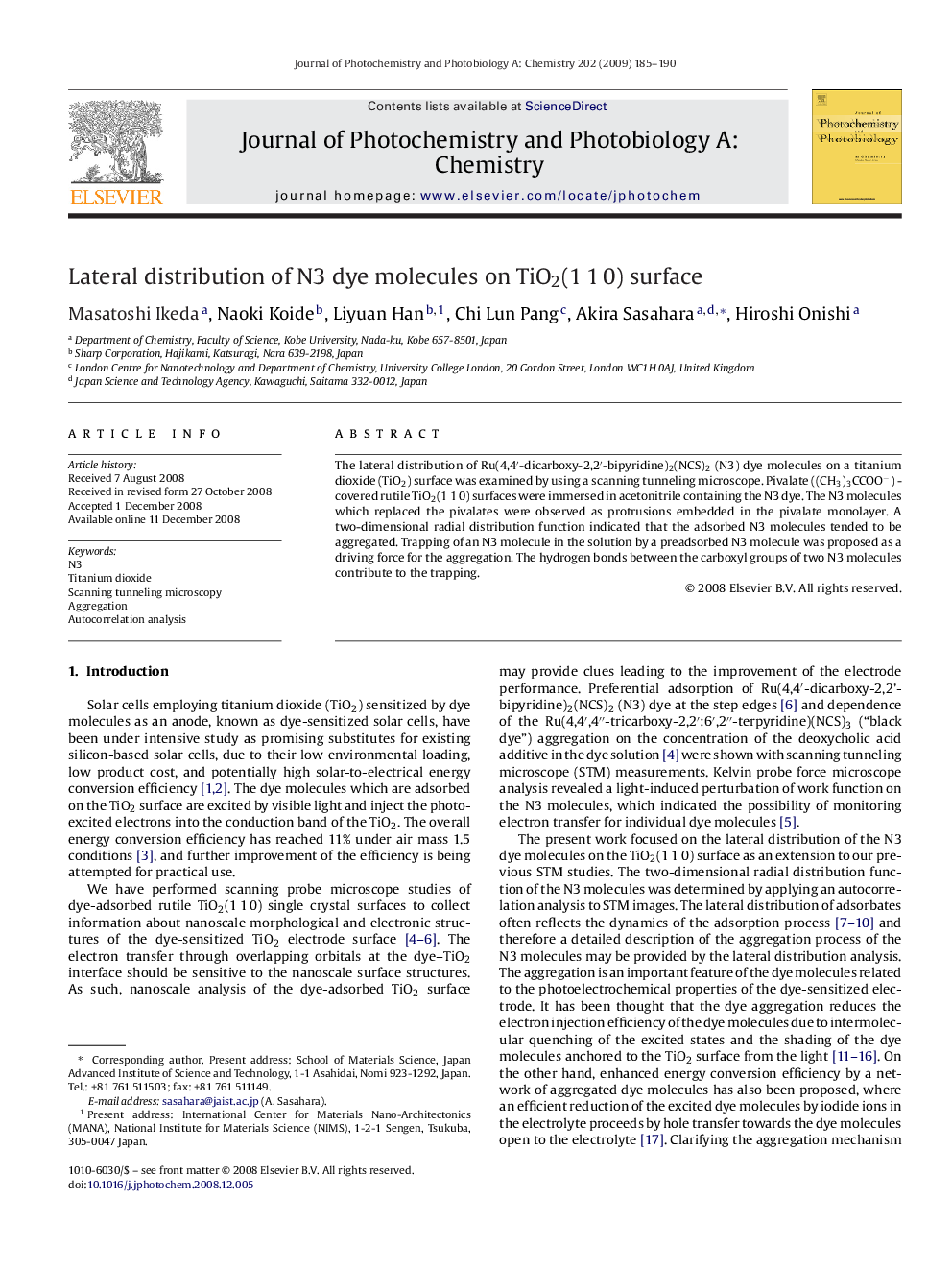| Article ID | Journal | Published Year | Pages | File Type |
|---|---|---|---|---|
| 28276 | Journal of Photochemistry and Photobiology A: Chemistry | 2009 | 6 Pages |
Abstract
The lateral distribution of Ru(4,4′-dicarboxy-2,2′-bipyridine)2(NCS)2 (N3) dye molecules on a titanium dioxide (TiO2) surface was examined by using a scanning tunneling microscope. Pivalate ((CH3)3CCOO−) -covered rutile TiO2(1 1 0) surfaces were immersed in acetonitrile containing the N3 dye. The N3 molecules which replaced the pivalates were observed as protrusions embedded in the pivalate monolayer. A two-dimensional radial distribution function indicated that the adsorbed N3 molecules tended to be aggregated. Trapping of an N3 molecule in the solution by a preadsorbed N3 molecule was proposed as a driving force for the aggregation. The hydrogen bonds between the carboxyl groups of two N3 molecules contribute to the trapping.
Related Topics
Physical Sciences and Engineering
Chemical Engineering
Bioengineering
Authors
Masatoshi Ikeda, Naoki Koide, Liyuan Han, Chi Lun Pang, Akira Sasahara, Hiroshi Onishi,
